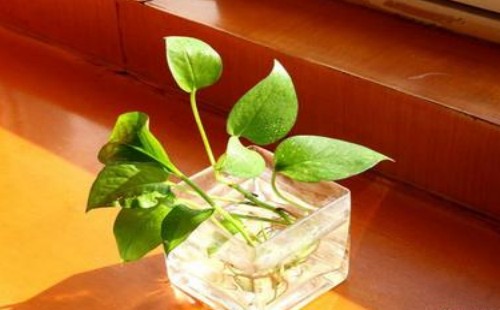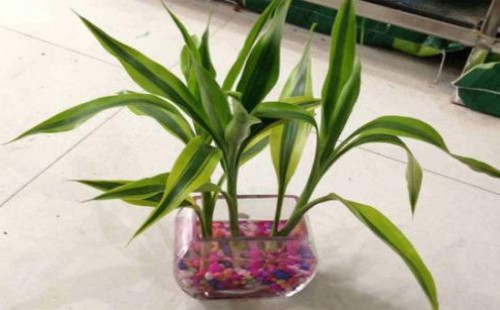How often do hydroponic plants change water?
The most frequently used means of hydroponic plants in the process of conservation and management is to change water, just like soil cultivation plants to change soil, which is an indispensable link. However, the frequency of changing water is often much higher than that of changing soil. So, how often do hydroponic plants change water? To answer this question, let's first understand why hydroponic plants often change water.

For hydroponic plants, changing water is one of the most important work, because if the water is not changed for a long time, on the one hand, the oxygen content in the water will become lower and lower; on the other hand, plants will also discharge some substances that affect their growth in the water, and the water quality is easy to change. Whether the oxygen content becomes low or the water quality is polluted, it is very disadvantageous to the growth of hydroponic plants, and may even cause a variety of poor growth phenomena.
It can be seen that changing water is of great significance for hydroponic plants, so we need to do a good job of changing water in time. Under normal circumstances, the water exchange period of hydroponic plants is 3-7 days. How long it takes to change the water mainly depends on the current season, the growth state of the plant and other factors. For plants that have just started hydroponic culture, the original generally needs to be treated once a day for 1-2 days, especially when the summer temperature is too high and the plant growth is exuberant.
After entering winter, many plants will gradually enter dormancy or semi-dormancy with the gradual decrease of temperature, and the water consumption is relatively less, so the water exchange cycle can be extended appropriately. However, generally speaking, the shorter interval and higher frequency of water change are more beneficial to the growth of plants.
In addition, in addition to the method of changing water, the choice of water quality is also very important. The most widely used and relatively better water quality is pure water, because pure water is not only cleaner, but also has less salt, so it can usually be used as the first choice for hydroponic plants. At the same time, the pure water is also very clear and transparent, so it can be observed more thoroughly when used to raise flowers and plants, and it is environmentally friendly and pollution-free.
However, for the sake of convenience, many people like to use tap water to raise plants, which is also possible under certain conditions. Usually, before using it, we need to set it aside for 3-4 days to allow the chlorine in the tap water to volatilize fully so that it will not cause damage to the plant. If it is sunny, it can also be exposed to the sun, which can accelerate the volatilization of chlorine in the water.
When changing water each time, it is recommended to clean the root system, usually by flushing the root system, mainly in order to wash away the mucus or viscous material attached to the root system, so as to avoid affecting the absorption capacity of the root system. at the same time, it also reduces the probability of rotting roots. At the same time, it is also necessary to wash away the sediment from the wall and bottom of the container to prevent the breeding of germs from infecting the plant and affecting its growth.
However, one thing we need to pay particular attention to is the depth of each change of water, that is, where the water level is maintained. Soil culture can not cause stagnant water in the basin, otherwise it is easy to cause rotten roots; while hydroponic culture can also not put too deep water in the container, the recommended practice is to let the roots of plant 2 and 3 expose above the water surface, this can ensure that the roots can absorb the dissolved oxygen in the water as well as the oxygen in the air, so that the plant growth is more stable.
Time: 2019-06-06 Click:
- Prev

How do green pineapple cuttage soil culture
Green pineapple can be cultivated either in water or in soil, but no matter which way is adopted, as long as the maintenance and management is done well, it can play the role of beautifying the environment and purifying the air. Moreover, green pineapple is also very easy to reproduce, even if we take a branch and insert it into the soil that is suitable for growth.
- Next

What kind of water is the best for rich bamboo?
Water-raised rich bamboo compared with soil culture, often has more advantages, mainly put it indoors can make the indoor appear cleaner, and maintenance management also appears more convenient. Therefore, many people who like rich bamboo like to raise it in water at home. However, there are some deficiencies in aquaculture, that is, the use of water.
Related
- Fuxing push coffee new agricultural production and marketing class: lack of small-scale processing plants
- Jujube rice field leisure farm deep ploughing Yilan for five years to create a space for organic food and play
- Nongyu Farm-A trial of organic papaya for brave women with advanced technology
- Four points for attention in the prevention and control of diseases and insect pests of edible fungi
- How to add nutrient solution to Edible Fungi
- Is there any good way to control edible fungus mites?
- Open Inoculation Technology of Edible Fungi
- Is there any clever way to use fertilizer for edible fungus in winter?
- What agents are used to kill the pathogens of edible fungi in the mushroom shed?
- Rapid drying of Edible Fungi

